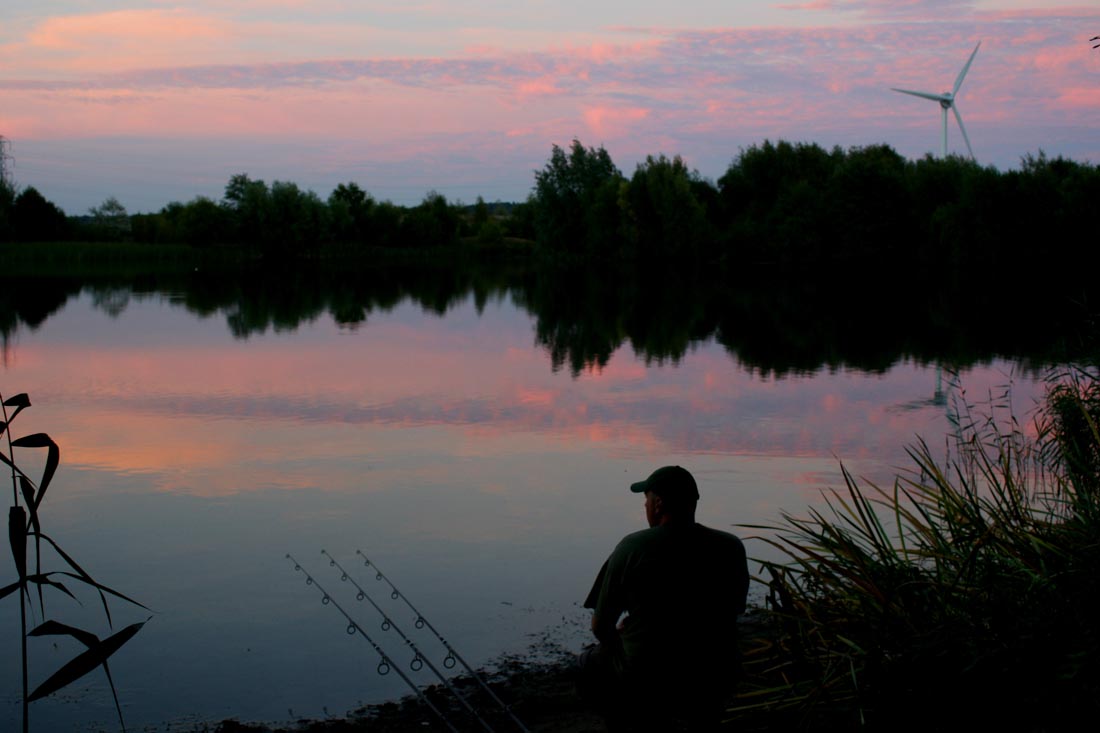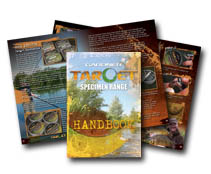Serious fishing was a little delayed this year because I was travelling back and forward to Nottingham to complete an angling coaching qualification. There was lots of written work involved in between the days that I had to be there, but I eventually came through it even though my hand did feel like it was going to fall off most of the time, I’m so much happier tapping away on the laptop these days! The weather was still cold but a new ticket for Lymm angling club had arrived and I really fancied a visit to Chester Lakes’ specimen pool. I had heard whispers on the grape vine about this place a few years ago and I couldn’t wait to get down there and get some sessions in.
The lake is around five acres in size, it varies in depth from three feet to around twenty feet and there is sand, clay and silt to have a nosey at on the bottom. The mature trees and bushes around the pool make it perfect for stalking and setting traps in the margins, there is also an island close to the far bank with a sand bar running off it at either end. There are no bivvies or brollies allowed on the far bank behind the island – there is a slope down to the water here and very little room so this bank is for stalking with one rod only. The busy A road adjacent to the stalking bank is pretty much hidden by trees but it is a bit noisy. However, after being there for an hour or so you strangely forget it’s there, maybe because the lake demands your full attention!
My first visit to the lake saw me prepared for pretty much anything, the van was loaded with all kinds of tackle that may come in handy (but probably won’t) and on a chilly Friday morning I’m off for a look around. It took me around five minutes to find a Carp! I was stood looking down into the water on the stalking bank and an upper twenty mirror swam slowly past.
The small gaps in the trees behind me meant that the traffic could be seen in places so I thought that the fish wouldn’t spook so easily here, the traffic never stops all day and they’re probably used to seeing movement on this bank. I was right; I managed to move ahead of the fish quickly enough to get some chopped bait in its path further along the margin behind the island. Sure enough, the fish found the baits and it continued to completely clean the spot without any hesitation at all. Nice!
After baiting a couple more spots along the stalking bank, I headed quickly back to the van to put some stalking kit together. With all the essential bits, I returned to the stalking bank moments later only to find a slight brown tinge in the water where the fish had cleaned the last spot that I had baited. I looked everywhere but could see no signs of the feeding fish or any others in the area. I decided to put a little more bait in and return a bit later to check if it had gone. I now knew that stalking could be a great tactic on this lake and watching a fish take your hookbait beats pretty much anything in fishing for excitement! The fish had fed with confidence here and I did fancy my chances of catching one pretty quickly to be honest.
I concentrated on fishing the stalking bank by casting over from the opposite bank for the next couple of trips but I wasn’t happy with how I was fishing to be truthful. When I was round there fish spotting I could see lots of branches and twigs on the lake bed and the only way I could be sure of a good presentation was to fish a choddy. I couldn’t buy a bite and it soon became apparent that the fish weren’t going to fall to the choddy when the freebies were on the deck. I tried some of my best hookbaits on the chod with no freebies at all to see if they’d fall to a single but nothing. I soon learned that the fish were extremely wary of a bait that had any colour in it at all after watching a carp literally stop in its tracks and swim around a single hookbait that was designed to be a washed out yellow colour! Ouch!
The more I watched the fish, the more I learnt about their habits and I saw something really interesting on my third visit to the lake. I arrived at seven on the Friday morning, the car park was empty and I had the lake to myself, perfect! I had a walk straight round to the stalking bank expecting to find the fish behind the island (again). Wrong! Nothing there at all! I came back around the lake and walked along the two banks where you can reside in your bivvy and found eight fish ripping the bottom apart a rod length out right in front of one of the swims! It was a bit of a shock to say the least and I stopped suddenly and kind of reversed slowly backing behind a tree to the left of the swim to hide.

Watching the fish
I watched the fish drilling into the lakebed here for around fifteen minutes before I decided to carry out a little experiment. I broke a few boilies up into maybe quarters of sixteen millimetre bait; I flicked them one by one into the water a foot away from one of the fish.

I fed chops into the edge
I wanted to see if the fish would leave the naturals it was feeding on and move on to bait, now I’m certain it didn’t sense the bait entering the water amongst the clouds of mud but after maybe twenty seconds, it knew it was there. The fish lifted its head and turned towards the bait, there was a pause… then it turned and swam slowly off up the margin taking the other fish with it, I was stunned!
The weather was warming up, spring was well on its way and the fish were now on the move, actively searching out the first bits of natural food inhabiting their lake. The margins where they were digging is the first part of the lake to feel any warmth from the sun’s rays in the morning and they obviously like feeding here, so I thought maybe if there was bait here when they arrived it could distract them away from the naturals. I set up my brolly well back from the waters’ edge and laid some traps in the margins, I always love fishing where nobody else bothers to put bait on these pressured venues and so I did just that. I donned the chest waders and got in the water with my landing net pole, the lakebed seemed pretty uniform and then it sloped off quite quickly a couple of rod lengths out.
(Please exercise extreme caution if you do wade as there are many deep silt patches that could cause you some difficulties if you are not very careful – always use a long bank stick or pole as a wading staff to make sure that the lake bed is suitable to stand on – Lymm AC)
I fancied an area around the tree line to my right and a storm pole was needed to take my line around the corner. I placed the bait, watched it settle on the bottom perfectly and gave it just a handful of chopped baits, some of which were thrown further along the treeline so they could pick at some bits before they came near the hookbait. My right hand rod was to be placed just off a bush to my left, again with the chops spread over a large area leaving a baited area that was hardly blatant when any carp approached.

The margins provided good cover
I had watched the fish slowly working their way along the margin to my left, they seemed to enjoy the sun on their backs and because there was still no one else fishing they were left in peace to continue grubbing around in the edge. I had decided to sit tight with my traps set, sometimes I think you can chase them too much and one slip up can put them on edge for quite a while. If the conditions were the same the next morning, I really fancied the chances of a fish on the mat. I was a hundred percent sure that the presentation was perfect on both rods; after all I had placed the baits and checked for any unwanted obstacles that may ruin my line lay. I used Wafter hookbaits that I knew would last for long periods in the water; I didn’t intend to move my baits until they were picked up or it was time to go home!
Unfortunately, it all went pear shaped as the weather forecast was wrong again! An easterly wind picked up and started blowing in my face and four more anglers appeared just before dark meaning there was little or no chance of fish patrolling the margins in the morning. I ended up moving one rod after all and I cast it tight to the island about seventy yards out, It was sheltered from the wind here and I thought they may just end up there away from the pressure. I knew I was clutching at straws again and I didn’t want to fish like this at all, a shot in the dark is not my style and with no viable move on the cards, I already had plans to get home in the morning for a full English! The rain poured and I sat thinking how things had changed in just a couple of hours, no signs of any fish now but you can’t have it your own way all the time can you!? I headed home soaked through thinking about the session, I knew that I’d got the tactics right to catch those fish at the start of the session and I would return to employ them again when the weather is, shall we say, a bit more settled!
On my fourth visit to the lake it was almost like stepping back in time to the previous trip. The fish were behaving exactly the same, rooting in the bottom in front of the same swim along the right hand bank. I wasn’t about to disturb them, I knew where they would go and I would set the traps in an area further along the margin on the left hand bank this time. As long as no one came and fished the car park swim, they would be free to use their little patrol route without being disturbed, and I could hopefully catch them when they come further up the margin in the afternoon or evening. Now, I should be able to set the traps well before they arrive, increasing the chances of them having a feed when they get here instead of just cruising quickly away high in the water in a way that tells you that your cover is blown!
There is maybe sixty yards of tree lined margin to the right of my peg that continues up to the car park peg, lots of water to explore with the waders on, so in I went after making sure the coast was clear and no fish were in the area. The lakebed was softer here, swan mussels were present along with the usual twigs and some branches.
Gardner Weed Rake” src=”http://www.gardnertackle.net/wordpress/wp-content/uploads/2012/06/Image-41-225×300.jpg” alt=”” width=”225″ height=”300″ />
I used a small weed rake attached to my lead clip to clear the area of anything that I thought could cause a problem, and then picked the spot to place my bait roughly half way down the tree line around a rod length from the bank but still tight to the overhanging branches. The water here was around five foot deep; it shallowed up towards the bank quite quickly after a few feet and went deep very quickly a few feet in the opposite direction. This made me think that the fish would head for deeper water when hooked rather than under the trees where it was maybe too shallow, perfect!

End tackle components
My favourite setup on this lake; 20lb Hydrotuff mainline, Camo Plummet Leadcore, Covert Multi Clip, 25lb Camo Brown Trickster Heavy hooklink and Covert Continental Mugga in size 8 with sliding “D”.

The rig
The trusty Fruit Smoothy Wafter was to be the hookbait of choice, it will sink down slowly and sit on top of the hook leaving it completely invisible. I was going to say that the rest of the end tackle looks fantastic on the bottom but maybe that’s the wrong choice of words as you can’t see it; anyway you know what I’m getting at! Ah…. I forgot to mention the lead – a friend of mine made these for me; they’re eight ounces in weight! I’m all for giving them something different to deal with and when I see everyone else chucking out three’s, I think it can cause a few problems. As I am only lowering the bait into the margin, I don’t have to cast so it’s perfect. When a fish shakes its head that hook is going into the flesh much further than with a lighter lead, then it releases from the clip leaving it nailed!
The right hand rod was put into position with the usual hand full of chopped baits spread along the treeline, the other mirrors the same approach in the edge to my left however I did fancy a bite on the right first! The first day passed by and although I saw fish down by the car park, they didn’t seem to venture along to where the first trap was set, maybe they knew? Darkness came and I was awoken by a few bleeps at around two in the morning, I was up and out in the rain like you do only to find that I had nailed a two pound eel on the right hand rod. Trust me I wasn’t chuffed as I now had to unhook the horrible thing and then wade back down the margin in the dark to reset the trap. Anyway I did so but nothing else happened that night, I still thought that the margin traps would work, it just needed a little more time.
It got warm that day and the fish were cruising around high up in the water for most of it. I was chatting to one of the regulars about some of the fish that resided in Chester’s specimen pool. Amongst others, Ben was talking about a common that doesn’t come out very often. He said it goes over thirty and is immaculate, I recalled seeing it behind the island on a previous visit and it looked lovely. I was entertained by Ben for most of the day as he moved from swim to swim, then he was stalking behind the island, keen as mustard! I asked him to slow down as he was making me dizzy and he eventually settled in the swim to my left and fished across to the stalking bank where he had seen some fish earlier. That night the sun went down behind the tree’s to my right and I still felt confident that my margin trap to the right would bring me a carp, if only the eels would keep away!
It was around half one in the morning when the right hand rod sprung into life, out of the blue the slack line picked up and the rod tip bent double around the bushes at the side of the peg. I was out in seconds; I picked up the rod and immediately felt the tension that my banksticks were dealing with while the rod was on the rests. I had kept the clutch on my reel pretty tight to prevent the fish from making any snags that could be further down the margin. I wasn’t giving any line and the fish had two options, the deep water or the very shallow water under the trees. Thankfully it chose the deep water and I was able to lighten the pressure while it tired out of harm’s way. It used the depth too, it took line off the clutch with some power into depths of nearly twenty feet but it was never going to win. It rolled on the surface a few rod lengths out and I could make out that it was a common, surely not the big common? Into the net she went first time and as I peered down and switched the headlight on I then realised, Chester’s big common was mine!
I secured the net with four bivvy pegs while the fish was resting and then nipped to the next peg to wake Ben; I knew he was good with a camera as he’d shown me some pictures that he had taken for some friends on his. He did me proud with the shots, even though he was dressed in only his boxer shorts! The stunning common we had only talked about the day before went 30.14 on the scales, back she went in perfect condition and I followed in my chesties to set the margin trap again!

An awesome looking common
Nothing else happened but I didn’t mind to be honest, I had enjoyed my time on Chester. I had another Cheshire 30 under my belt and although there are a couple of mirrors that go slightly bigger in there, it’s time to move on as June the sixteenth is fast approaching and a new challenge that I just can’t resist is just around the corner!
Until next time, enjoy and be lucky!
Paul Hatton









Any tips on where to fish this time of year as I’m going Saturday for the night,many thanks and mega catch !